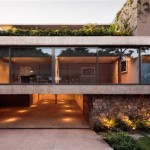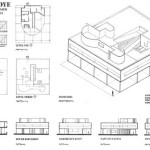Essential Aspects of Ancient Roman Villas Floor Plans
Ancient Roman villas, opulent residences for the wealthy elite, were renowned for their elaborate and sophisticated architecture. Their floor plans reflected the lifestyle and social norms of the Roman aristocracy, providing valuable insights into the daily life and customs of the ancient world.
One of the most distinctive features of Roman villas was their atrium, a central courtyard open to the sky. The atrium served as the social and functional heart of the home, providing light and ventilation while connecting various rooms.
Adjacent to the atrium was the tablinum, a semi-public space where the owner conducted business and received guests. Connected to the tablinum was the triclinium, the dining room where guests would recline on couches and enjoy lavish meals.
Roman villas often featured multiple peristyles, enclosed courtyards surrounded by columns. These peristyles provided additional outdoor living spaces, creating a sense of spaciousness and tranquility.
Bedrooms, or cubicula, were typically located on the upper floors of the villa. They were often small and windowless, with frescoed walls depicting scenes from mythology or everyday life.
Roman villas also incorporated baths, known as thermae. These baths consisted of a series of rooms with different temperatures, allowing for hot, cold, and warm bathing.
In addition to the main living quarters, Roman villas often had separate wings for servants and slaves. These wings contained rooms for sleeping, cooking, and storage.
The floor plans of Roman villas varied depending on the size and wealth of the owner. Smaller villas had a simpler layout, while larger villas featured numerous rooms, courtyards, and outbuildings.
The design of Roman villas reflected the Romans' emphasis on comfort, luxury, and social status. Their floor plans provided a functional and aesthetically pleasing environment that catered to the needs of the upper classes.

Elegant Roman House With Atrium And

Pin By Rebecca Koch On Ancient Rome Roman Bath House Floor Plans

Discovery Of A Roman Villa Ground Plan In The Valley Gan Near Pau Giclee Print Art Com
Stephenson Late Roman Villas And Cognitive Science Architectural Histories

Roman House Layout Villa How To Plan

Roman Houses And Villas

House Of The Vine Museums Victoria

The Original Layout Of Now Reconstructed Roman Villa Viroconium Wroxeter House Ancient Houses
The Birth Of A Villa Stay Icon Villas

House Domus Roman Villa Ancient Architecture Angle White Text Png Pngwing








